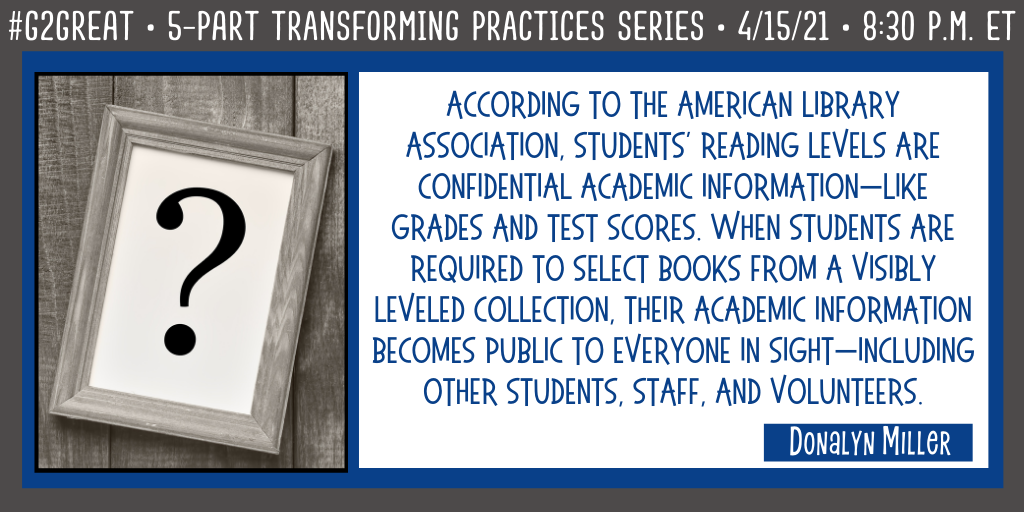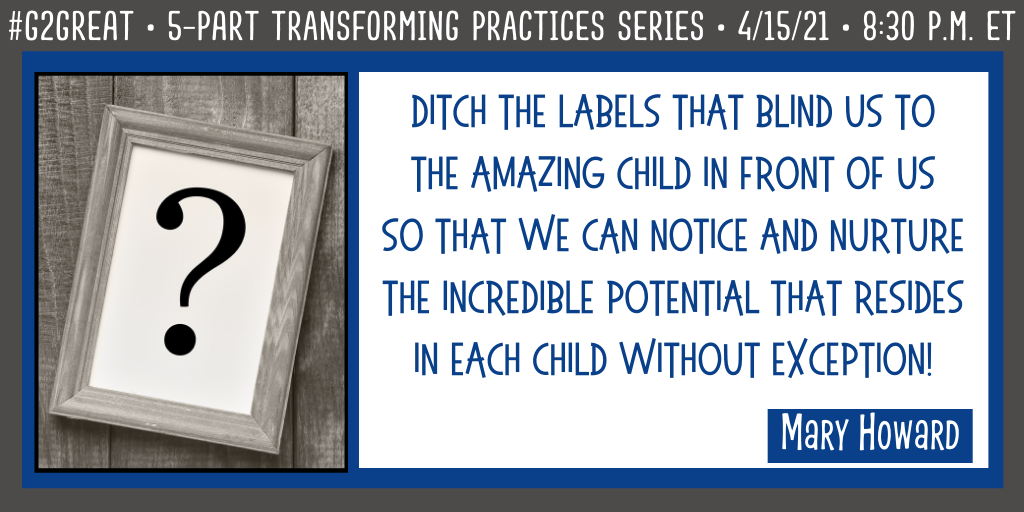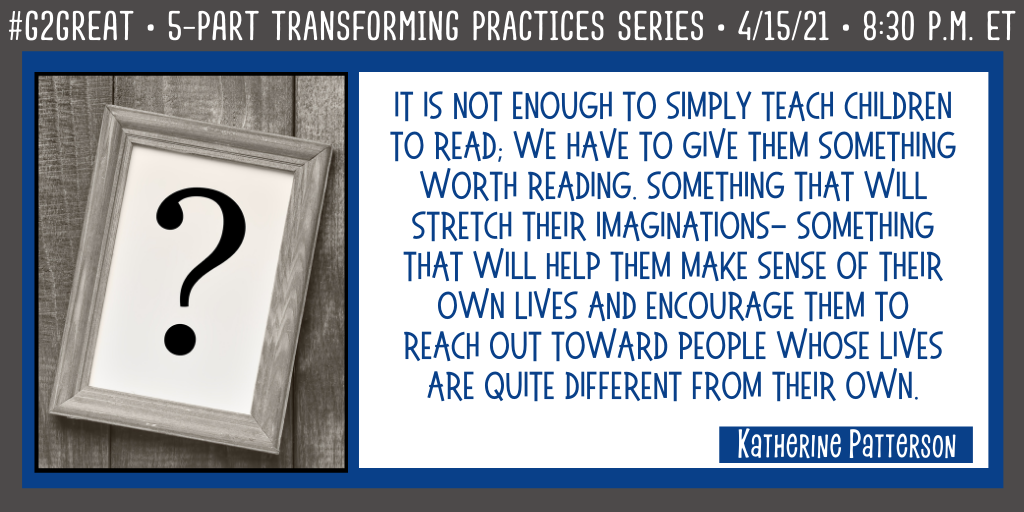By, Jenn Hayhurst

#G2Great delved into the second of a five-part series on April 15th: Re-examining and Revising Our Thinking to Transform Our Practices, Reading Levels Maintaining a Flexible Stance. I have grown to regard our series as a professional lifeline. These conversations continue to have a big influence on how I define teaching and my day-to-day practice. After years of learning alongside so many teachers who join in these chats, I have grown to believe that teaching comes down to two important questions: How responsive are we to students’ needs? How do we best promote a sense of agency for ALL students? I believe that leveled texts play a significant role in finding the answers to those questions.
Responsive: Leveled Texts a Teacher’s Tool

I attended a conference by Irene Fountas and she said, “A leveled text is the teacher’s tool.” That one statement shaped my whole approach to reading instruction because it rang true. Good books make children want to read. Leveled texts are built on a continuum of reading development. They offer growing complexity for reading behaviors in word study, syntax, and comprehension. It just made perfect sense to me. Then years later I heard Lester Laminack speak, and he said, “The first read of a book is a gift. Let the author do his job.” Those words touched me deeply and shaded the nuance of what reading instruction ought to be. You see, before books can be used as tools, they need to be loved by children. Teaching children how to read is a sacred act, one that requires deference and skill. For these reasons teachers had a lot to share about why leveled texts are responsive tools while also drawing attention to the dangers of their misuse:
A Sense of Agency: Living Readerly Lives

There are so many reasons why my friend Mary inspires teachers all over the country and the world. She is the constant advocate for a child-centered approach. One of her many attributes that I admire is her unflappable adoration for children. She is truly one of our better angels. Giving children access to literacy is essential, and in this quote, she is reminding us that it is our responsibility to see the whole child in that pursuit. To do less would be to undermine who they are. Teaching children how to read is to show them that they have a place in the literate world. Peter Johnston said, “If nothing else, children should leave school with a sense that if they act, and act strategically, they can accomplish their goals” (Johnston, 2004, p. 29). Using leveled texts is one part of how we teach children how to read with growing confidence. Literacy grants students access to an agentive life. In other words, agency and literacy go hand-in-hand:
As I close my post, I want to leave you with this: the goal is not just to teach children how to read, it is to honor who they are as literate beings. Grade level expectations are one thing, labeling a child is quite another. Above all else, we cannot allow anything to interfere with a child’s love for reading, or a teacher’s craft. Believe in your kids, believe in yourself. A skilled teacher, a classroom library, and a room full of readers is the ultimate goal.
